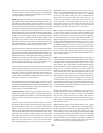Translations
This is just a few commonly used musical terms translated into technical terms or specific Massive Passive techniques. Note that
these are fairly loose descriptions and definitions. Your mileage may vary.
Bottom, Fat the deep lows
for more: bell boost below 100Hz or use any low shelf up to even 330Hz. When you use a shelf
this high, you should experiment with the bandwidth control. One should be extra careful pushing
deep lows if one can't really hear them on 6 or 8 inch woofers.
Tubby probably too much lows.Try removing somewhere between 82 to 220.
Sibilance between 5kHz and 8kHz for men & between 6kHz and 10kHz for women
for less: Bell cut at these freqs or Shelf boost with mid to narrow bandwidth freqs from 4700 to
27K to get more air and ultra-highs while removing sibilance. The exact frequency and bandwidth
depends on the singer or source. The typical problem either is a gap in the singer's teeth (that a little
chewing gum or wax in the gap may help) or HF distortion typical in many mics and low budget
gear. It is better to cure the problem at the source rather than later resort to yet more EQ and de-
essers.
Nasal, Squawk corresponds to too much mids. A Bell cut between 820 and 1500 should help.
Honk much like "nasal" but probably a little lower. Probably between 400 and 800.
Muddy usually corresponds to too much low mids and not enough highs. First try bell dipping 220 Hz to
440 Hz. Sometimes high pass filtering some tracks helps but do it carefully.
Presence, Edge usually upper mids, ie 2200 to 4700
for more: try a gentle bell boost at 3300 to start. Better yet move the mic closer and use Omni.
Air the extreme highs like 16kHz or 27kHz. With this EQ you can also try any of the shelves above
6800 adjusting bandwidth control and/or try the 4 highest frequencies, especially with "Bell 2".
Some years "that airy sound" is in fashion, some years it isn't. Extreme "Air" is cool in a lot of
freestyle sports but in audio it often runs the risk of "painfully bright", or "screaming highs".
Telephone Sound First try deep shelf cuts using the two bands set approximately for 470 and 3900. Experiment with
the bandwidths and frequency selects. Try mixing in some distortion stomp-box or guitar pedal.
Attack usually the upper mids but depends on the instrument. For example on drums and bass for more
attack try boosting 2200 Hz, for piano try 4700 or 5600. Limiters usually remove some of these transient
heavy areas and may seem to dull the attack. The cure for that is longer "attack times" on the limiter.
Thump corresponds to the deep lows like between 33 and 68. Try the Shelfs first !
Warmth many vague meanings depending on who said it and in regards to what instrument. You can try adding
low mids anywhere below 330 (try 250) or removing the extreme highs (try cutting 16K and 27K filters).
Lately some people mean the sound is too clean or "digital". You can use a combination of shelf boost
and shelf cut on the two lowest bands to drive the EQ section hard then restore it to reasonable levels and
flatness. You can also try hitting the EQ with a boosted signal and turning the return point down. The
usual culprit is too many cold crispy synths and samplers and you likely can't change that decision easily.
Pop with vocals usually means the excessive "P"s and "B"s when the singer is on-axis and close to the mic.
First try a "popper stopper" or pencil in front of the mic and/or try swivelling the mic so that it points to
the singers shoulder and maybe use the High Pass filter on the mic or mic pre. With snares it can mean the
fundamental anywhere from 330 to 1200 Hz depending on the drum.
"FM DJ" Lots o' lows and highs. Try dipping mids first. The trick is to start with a real DJ and use a little EQ.
"Old British" Clear some muddiness by removing some 220 to 470 and boost a bit of presence around 2200 to
4700. An alternative technique is boosting the "defining character" or "note" of each instrument which
entirely depends on the instruments. Best to do it without "solo's" and in the mix.
25


















